You can use the factory design pattern to build two different collection views and return them via functions. Here's my working version for swift 4.
This code goes in a separate helper file:
import UIKit
class collectionViews {
static func collectionViewOne() -> UICollectionView {
let layout = UICollectionViewFlowLayout()
let collectionViewOne = UICollectionView(frame: CGRect(x: 0, y: 20, width: 200, height: 100), collectionViewLayout: layout)
return collectionViewOne
}
static func collectionViewTwo() -> UICollectionView {
let layout = UICollectionViewFlowLayout()
let collectionViewTwo = UICollectionView(frame: CGRect(x: 0, y: 300, width: 200, height: 100), collectionViewLayout: layout)
return collectionViewTwo
}
}
And here is the view controller code:
import UIKit
class ViewController: UIViewController, UICollectionViewDataSource, UICollectionViewDelegate {
let collectionViewOne = collectionViews.collectionViewOne()
let collectionViewTwo = collectionViews.collectionViewTwo()
var myArray = ["1", "2"]
var myArray2 = ["3", "4"]
override func viewDidLoad() {
super.viewDidLoad()
collectionViewOne.delegate = self
collectionViewOne.dataSource = self
collectionViewOne.register(UICollectionViewCell.self, forCellWithReuseIdentifier: "MyCell")
view.addSubview(collectionViewOne)
collectionViewTwo.delegate = self
collectionViewTwo.dataSource = self
collectionViewTwo.register(UICollectionViewCell.self, forCellWithReuseIdentifier: "MyCell2")
view.addSubview(collectionViewTwo)
}
func collectionView(_ collectionView: UICollectionView, numberOfItemsInSection section: Int) -> Int {
if collectionView == self.collectionViewOne {
return myArray.count
} else {
return myArray2.count
}
}
func collectionView(_ collectionView: UICollectionView, cellForItemAt indexPath: IndexPath) -> UICollectionViewCell {
if collectionView == self.collectionViewOne {
let myCell = collectionView.dequeueReusableCell(withReuseIdentifier: "MyCell", for: indexPath as IndexPath)
myCell.backgroundColor = UIColor.red
return myCell
} else {
let myCell2 = collectionView.dequeueReusableCell(withReuseIdentifier: "MyCell2", for: indexPath as IndexPath)
myCell2.backgroundColor = UIColor.blue
return myCell2
}
}
}
Result


self.collectionView.register(Cell.self, forCellWithReuseIdentifier: Cell.identifier)
(Variable names will have to be changed.) – Parth Aug 29 '19 at 21:10